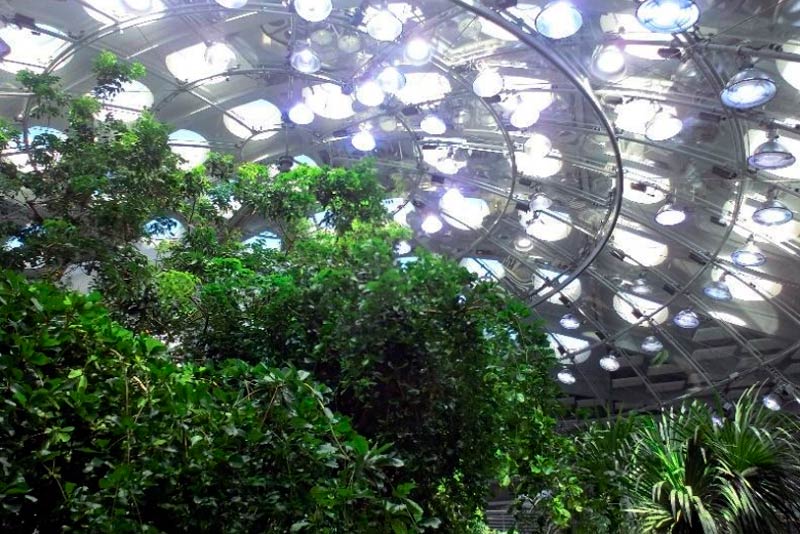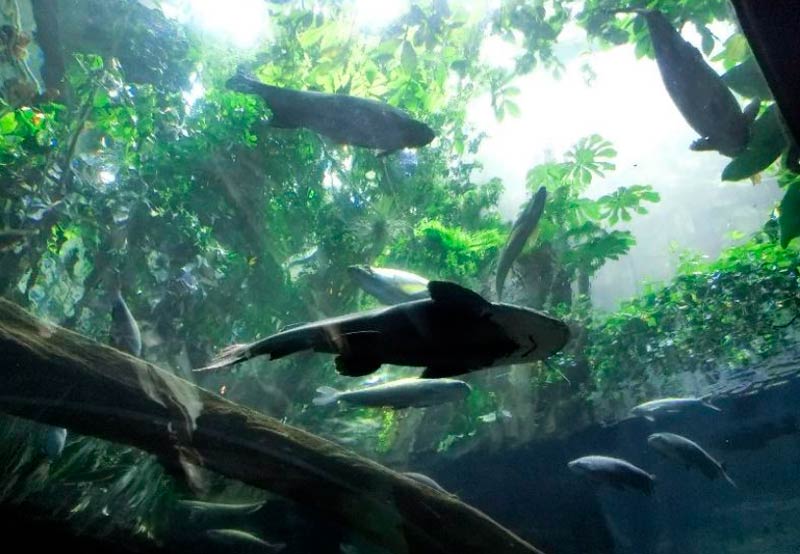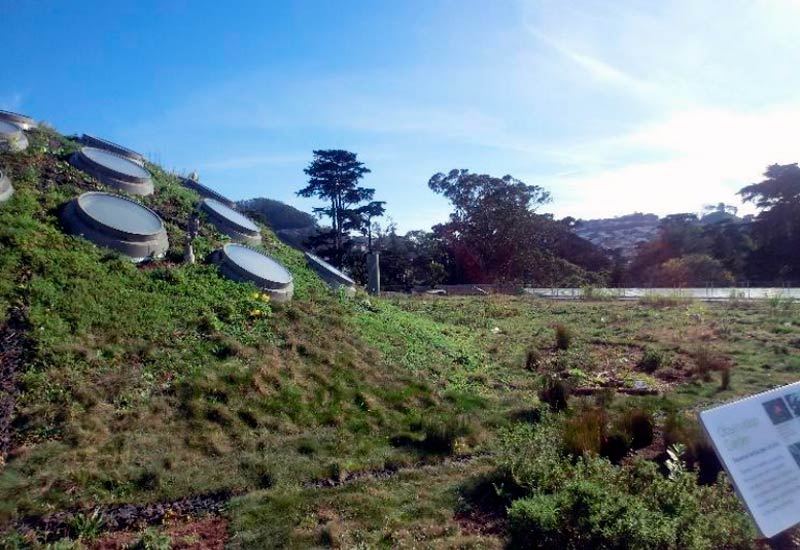Sigma Pi Sigma Physics Congress (PhysCon)
November 3, 2016 to November 5, 2016
San Francisco, CA
Meeting host: By:Lauren Selensky
SPS Chapter:

For most of us PhysCon attendees, the California Academy of Sciences tour was not our first choice; however, in retrospect, I would argue that it was the best. In a way, I was reminded of an elementary field trip: My interest was piqued because I knew very little about our destination, and I was apprehensive for the same reason. During the commute, I spoke with several students who shared my sentiments. We guessed about the nature of the Academy; I thought we would be touring a university, but aquarium, museum, and public park all made the list of guesses.
My first impression was of the extensive outlying gardens, peppered with statues, fountains and… food trucks? With a blessing on our journey and a warning not to miss the return bus, our chaperone set us loose near the glass-paneled entrance of the Academy, and we joined the throng, scattering in all directions and pointing at a curious array of exhibits.
The first thing I noticed was the dinosaur skeleton. The second was the enormous bio-sphere behind it. The transparent dome enclosed a “slice of life” rainforest that could easily pass for a set on The Day the Earth Stood Still or Jurassic Park. On approach, an attendant let me through the air-locked doors, and I was immediately transported to a sub-tropical locale that smelled like petrichor and sweat. A railed catwalk spiraled up and around the interior of the globe, through multiple layers representing the major rainforests of the world. I became a convenient rest stop for exotic butterflies as I strolled through the canopy. Nothing was roped off or sealed away; I truly felt like a part of the exhibit. The caretakers were outgoing, well-informed, and ready to share their corner of the world with me.
I took a glass elevator below the ground level to a luminescent aquarium. As in the biosphere, habits from oceans worldwide were represented. The attendants of the open starfish tank invited guests to touch the echinoderms, an experience I found both thrilling and unsettling. One of the larger coastal tanks was inhabited not only by its native species, but by several scuba divers. At first, I thought they were cleaning the enclosure, but that turned out not to be the case. There was a gaggle of young children with their faces pressed up against the glass, and the divers were swimming around, pointing out interesting features to them, and signing to them through the glass. This turtle. That coral. These oysters. When a diver swam over to the group and raised her hand, one of the little girls stepped up on tiptoe and gave her a high five through the glass. Seeing that connection across that boundary felt surreal.

When I was satisfied that I had exhausted the maze of aqueous exhibits, I took the elevator back up. All the way up. I am still uncertain where inside became outside, but I stepped out of the elevator and into what looked like Hobbiton. I was on a level with several small hills dotted with round portholes that illuminated the building below. There was a fresh breeze off the Pacific that carried the sounds of jazz and the smells of spice across the “living roof.” Herb gardens and flower beds humming with bees surrounded the sunny platform I was standing on. It is my everlasting regret that I did not have a wicker picnic basket with me to complete the scene. The groundskeepers explained that the roof was made of lightweight layers, designed to sustain and literally support a self-sufficient, native ecosystem. It contributed to the overall structure not only as a roof, but as a source of rainwater for the grounds and produce for the downstairs café, and as a sanctuary for the local bee population. I don’t know if this is a lesson in horticulture or engineering, but either way, the “living roof” is an integral part of the function of the Academy.

While waiting for the bus, I took a few minutes to reflect on the purpose of this fascinating structure. It is a juxtaposition of modern and classical architecture that brings together cultures normally separated by distance and time. It is a place where people can intimately encounter ecosystems from near and far through open exhibits that are designed to be engaging and interactive. It presents information in a way that encourages questions and discussion of both old methods and new concepts. I think the Academy was (successfully) designed to appeal to my inner child. I was engaged, and I had the sense that I was a part of—and had a connection to—the world that the Academy was presenting to me. As the bus pulled in, I asked a young man in reception about the underlying purpose of the Academy. He told me that the Academy’s aspiration was to create a point of contact that allowed people to interact with and to see themselves as part of a world that they belong to and are responsible for
Institutions like the California Academy of Sciences demonstrate the principles of conservation and preservation in ways that impart wonder and a sense of responsibility to their participants. They provide a link between global issues and daily life. Photographs excluded, there are two things that I took away from my visit to the Academy, and I think both support the overarching theme of Unified Fields: as the gardener-engineers on the roof demonstrated, everyone has unique abilities that contribute to scientific knowledge in brilliant and often unexpected ways; and like the scuba diver and the little girl, it is essential to reach out across the boundaries that separate us in an effort to better understand our world, and our place in it.